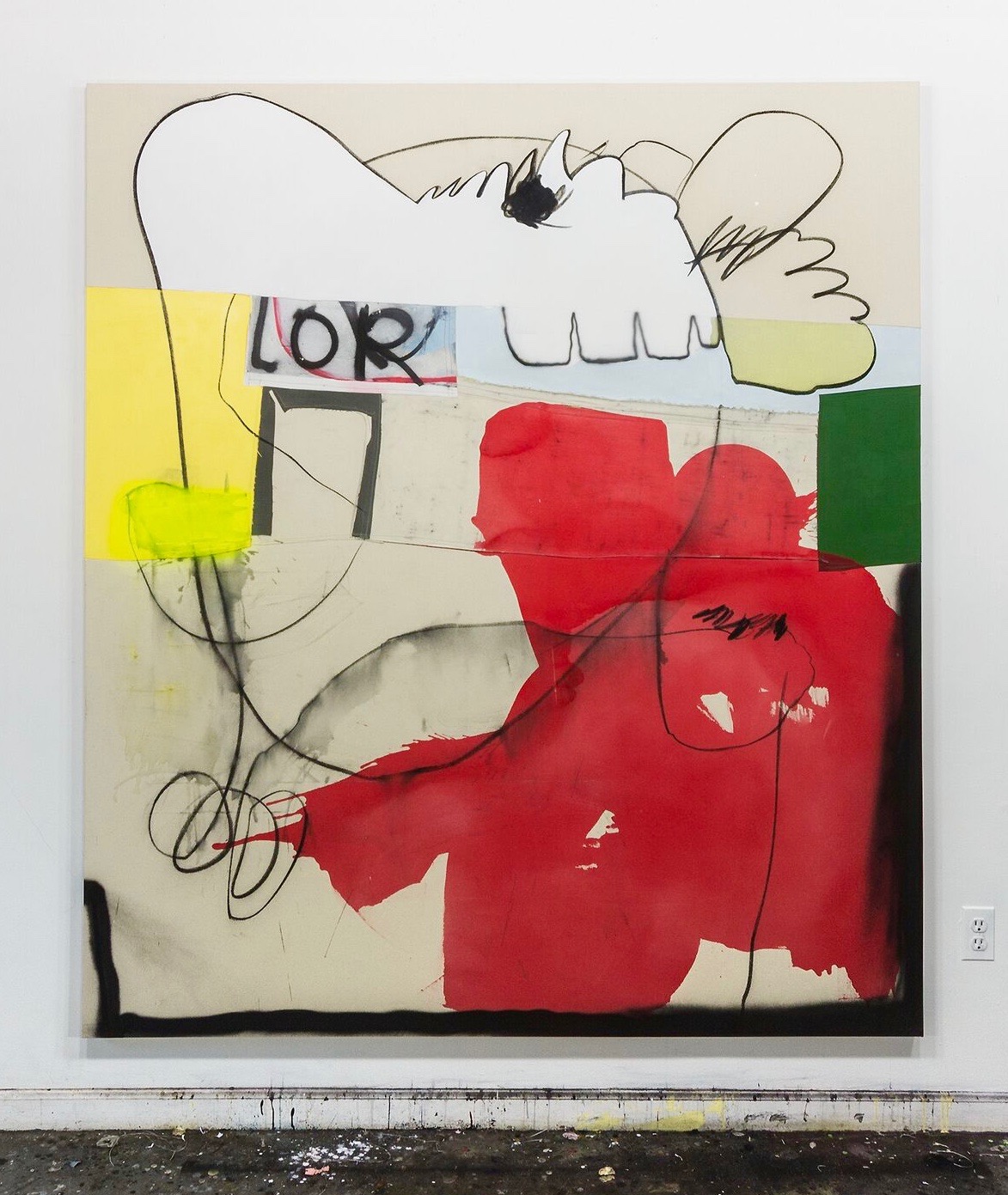TAYLOR ANTON WHITE COSMIDOODLES
By Peter Frank
Information overload is the thoroughly modern malaise. Not only have we access to more data and more distraction than any humans have had before, but that data and that distraction have more access to us. We inhabit an entirely mediated environment. So much of the art of our time addresses this circumstance, but too often simply adds to, even aggravates, it, ultimately disappearing into the noise. The contemporary art that best addresses its era of hyperinfo does not passively reiterate the conditions of overload, but seeks, almost subversively, to order – or perhaps re-order – those conditions. Proactive selectivity, lucid satire, and the elaboration of specific themes, memes, and formats into something demonstrably self-contained, self-sustaining , and frequently self-referential brings the info avalanche back to human scale, not least by asserting human agency. That avalanche can still overwhelm; but, given coherence by artists who are in the flow but not of it, said avalanche exhilarates rather than enervates. The artist becomes the (gleefully subjective) curator of the infosphere.
Taylor Anton White is one such artist who finds signal in the noise – by listening to the noise in his own head as keenly as he does in his surroundings, and by finding and amplifying the patterns that constitute that signal. He makes sense because he finds sense, and does so not by plunging willy nilly into the datasphere – although the often explosive expansivity of his drawn, painted, and collaged gestures bespeak impulse and bravado – but by wandering through it with great care, selecting forms and rhythms and (re-)arranging them into newly sensible, if hilarious, relationships. It is as if White is picking his way carefully through a vast junkyard of shapes and ideas, mining it not so much for what is generally thought valuable but for what he can render coherent. Meaning is renewed in this ongoing adventure among the miscellany -- a meaning found not in forms themselves but in their newly awakened compositions.
The above makes White sound like an assemblage sculptor. But he admits to working only as a painter and collagist, engaging materials and hand-rendered images within the quadrilateral bounds of a fixed plane. (Often enough, however, White’s markings crawl around the sides onto the stretcher bars, torqueing the plane dramatically, and wittily). White subjects his imagery to a boisterous tumble and jumble, so that disparate elements, some referential and some purely gestural, knock into one another like bathers in a rip tide – a powerfully realized compositional strategy that embodies and exploits the collage nature of our lives. The Machine Age was defined by such a collage aesthetic; artists like White demonstrate that that aesthetic remains at the heart of the Digital Age.
Or does White, and do we, simply think the collage aesthetic maintains at a time of hyperinfo? Are his paintings in fact rear-guard arguments against the smooth homogenization afforded the universe by the ubiquitous plasma screen? To be sure, White’s work, like most analog-media art these days, suggests through comparison that our digital tools suppress our senses and deaden our experience. White’s art doesn’t simply jump around in front of our eyes, it jumps for joy in our space, leaping off the picture plane the way images can’t off (or out of) a monitor (virtual reality be damned). There is an élan to White’s painting that indicates he is very consciously struggling to actualize material as well as visual content – that, in fact, he does not distinguish between what appears and what materializes, but lets the whole shebang embrace the site and space allotted it. Sculpture occupies literal space; painting and drawing occupy the figurative space of the picture, but their support surfaces and what those surfaces bear are material, too.
With all his formal game-playing, freewheeling media mix, and crack sense of balance – a sense that allows his forms to seem perpetually in motion and/or in the process of being made formulated – Taylor White is clearly positing painting itself, the act of painting no less than the fact of painting, as a means of resensitizing human perception. By looking at White’s work we don’t simply see something, we feel something, and feel it with our skin. It appeals to the touch through the eyes, and implicitly argues that this cross-sensory appeal, a key component of the viewer’s experience with a painting, is not available from the second-hand optics that dominate our era. To be sure, White’s funky, exuberant designs look pretty stimulating on screen; one can readily imagine them animated. But one doesn’t need to: they animate themselves as they hang on the wall, employing a cartoon vocabulary in telling very oblique but very funny narratives. This is laugh-out-loud painting, but you dare to laugh because the paintings’ physicality is so assured. In the digital tsunami, White’s painting laughs back.
Los Angeles
July 2017

